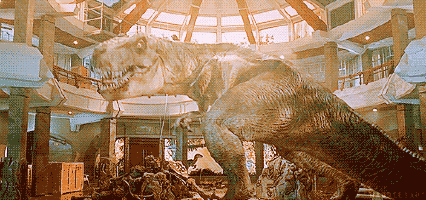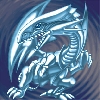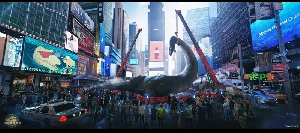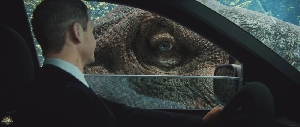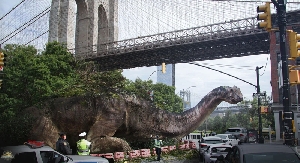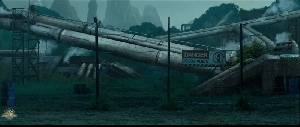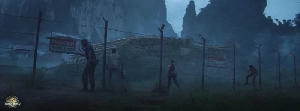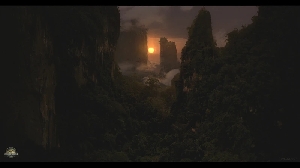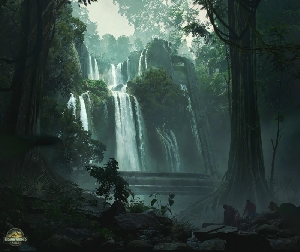Dinosaur discussion
Dinosaurs Forum Topic
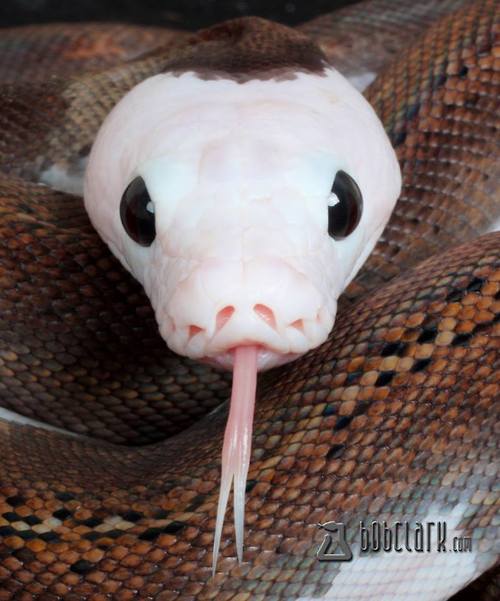
Carnosaur
MemberCompsognathusFebruary 23, 20142896 Views26 Repliesi opened this thread for one reason, and y'all know it. So, without further adue, let's get started.
Our first topic, The oh so controversial Spinosaurus.
Recent studies have signifigantly reduced its weight, from the estimated 20+ to around 7-9 tons. Spinosaurus size..
Now onto its diet, Fossilized barbs were found in the jaw, and once belonged to an Onchopristis, direct evidence of a Predator/prey relationship. A recent study done in 2013 on the skull of Baryonyx revealed their jaw dynamics to be much like the indian Gharial. Gharials are mostly fish-eaters, but will take small deer if the oppurtunity presents itsself. Spinosaurs most likely ate the pterosaurs, or small hadrosaurs that coexisted with them. It's teeth were conical, good for gripping and puncturing, but not much else. A flailing animal would undoubtably break some teeth off. Spinosaurus probably stuck to the waters, only hunting land based prey when the dry season hit.
Now for the estimated total length. The first fossils unearthed by stromer in 1915 were enormous. Intial estimates placed it at 16-18 meters. However, given the harsh conditions it was unearthed in (the Sahara Desert) some believe it's just an abnormally large animal, as not much can survive th eroding forces of wind and sand.
Classification of poorly known theropods, and why it's difficult. Not that long ago, i did a Profile on Torvosaurus. In it, Saurophaganax and Epanterias were mentioned, alongside edmarka. It is believed that Saurophaganax and Epanterias are just large Allosaurus', while edmarka is just a large Torvosaurus. Fragments of the two allosaur-like beasts remarkably resemble those of Allosaurus, just larger. More remains wil need to be unearthed to be sure, now on to Edmarka. Robert Bakker distinguished the two from the features of the jugal bone, which shows both primitive and derived features. Other fragmentary theropods are gigantic, but are, again, fragmentary. More would need to be unearthed to even distinguish them for known taxon.
And the largest theropod is..
Touchy topic. As we all know, largest refers to weight, not length. With new weight estimates for Tyrannosaurus and Spinosaurus, the largest may change. Contenders for largest theropods are mainly carcharodontosaurs, it's not difficult to see why. Giganotosaurus, Carcharodontosaurus, Mapusaurus, and Acrocanthosaurus are all massive, Averaging at about 7-8 tons, with the exception of Acrocanthosaurus. I have yet to see a list made with carefully selected, scientifically based weight estimates. My personal opinion is Acro Rex got it mainly right in his post, but still, An official scientific one would be fantastic. This video provides a scientific outlook on the topic..Illiterate Scholar
Tyrannosaurus Rex: Hunter or Scavenger?
Now, this one comes down to just plain common sense. No Carnivore relies solely on scavenging. It just wouldn't survive. We all know jack horners theory, that it couldn't run fast enough to catch its prey. Ankylosaurs, Hadrosaurs, and Ceratopsians weren't particularly fast. Hadrosaurs reaching 15 miles an hour, Ceratopsians and Ankylosaurs reaching 10. Rex only needed to be as fast as its prey. Tyrannosaurus' bone crushing teeth helped get nutrients that no other carnivore in its region could, the bone marrow. Its teeth also allowed for it to eat most of a carcass.
In 2008, tyrannosaur expert Thomas Holtz, Jr. did what Horner never did. Holtz stacked up Horner’s claims about the dinosaur’s anatomy and critically evaluated them. The notion that T. rex was best suited to be a scavenger crumbled. T. rex did not have unusually small eyes; biomechanical studies and limb proportions suggested that the carnivore was quick enough to catch fleeing prey; the dinosaur’s skull was reinforced to the point of being equally capable of subduing struggling prey and dismembering carcasses; and the oft-ridiculed arms of the carnivore would not have prohibited T. rex from employing the shattering power of its jaws.
Holtz’s argument went beyond the theoretical – damaged tail vertebrae on an Edmontosaurus skeleton gave away the depredations of another T. rexwho clumsily let their prey escape to live another day.
Why it's dangerous to estimate Theropod BL from a skull
With so many large theropods known from bits and pieces, it's normal to want to estimate total length from the skkull, right? Well...it's just a bad idea. Some specimens might have an abnormally large head, or other factors that i can't come up with right now. Here's a study that explains it further.. My theropod is bigger then yours
Did dinosaurs change radically as they grew up?
Answer, probably not. Again going to jack horner, who seems to think there is one of every prey species in the late cretacious of North America. My main issue? Stygimoloch, DracoRex, and Pacheycephalosaurus have different bone arrangements on the skull. Bone doesn't shrink or morph with age. It's a physological impossibility. Torosaurus is found in spots Triceratops is not, and has two 'windows on its frill. There are even triceratops specimens larger then Torosaurus. Here's a video that explains it more..Torosaurus vs Triceratops. Did dinosaurs have to grow quick in order to avoid being eaten? yes. Tyrannosaurus, for example, went through a drastic growth rate from the ages of 12-18.
Sauropods like argentinosaurus and Apatosaurus also had to grow fast. Growing to 4 tons by the age of 3. This was mainly to avoid being eaten by the gigantic predators it lived beside. 
Well, there we are. My unbiased, scientifically backed opinion on various topics.
Nature doesn't deceive us; it is we who deceive ourselves.

